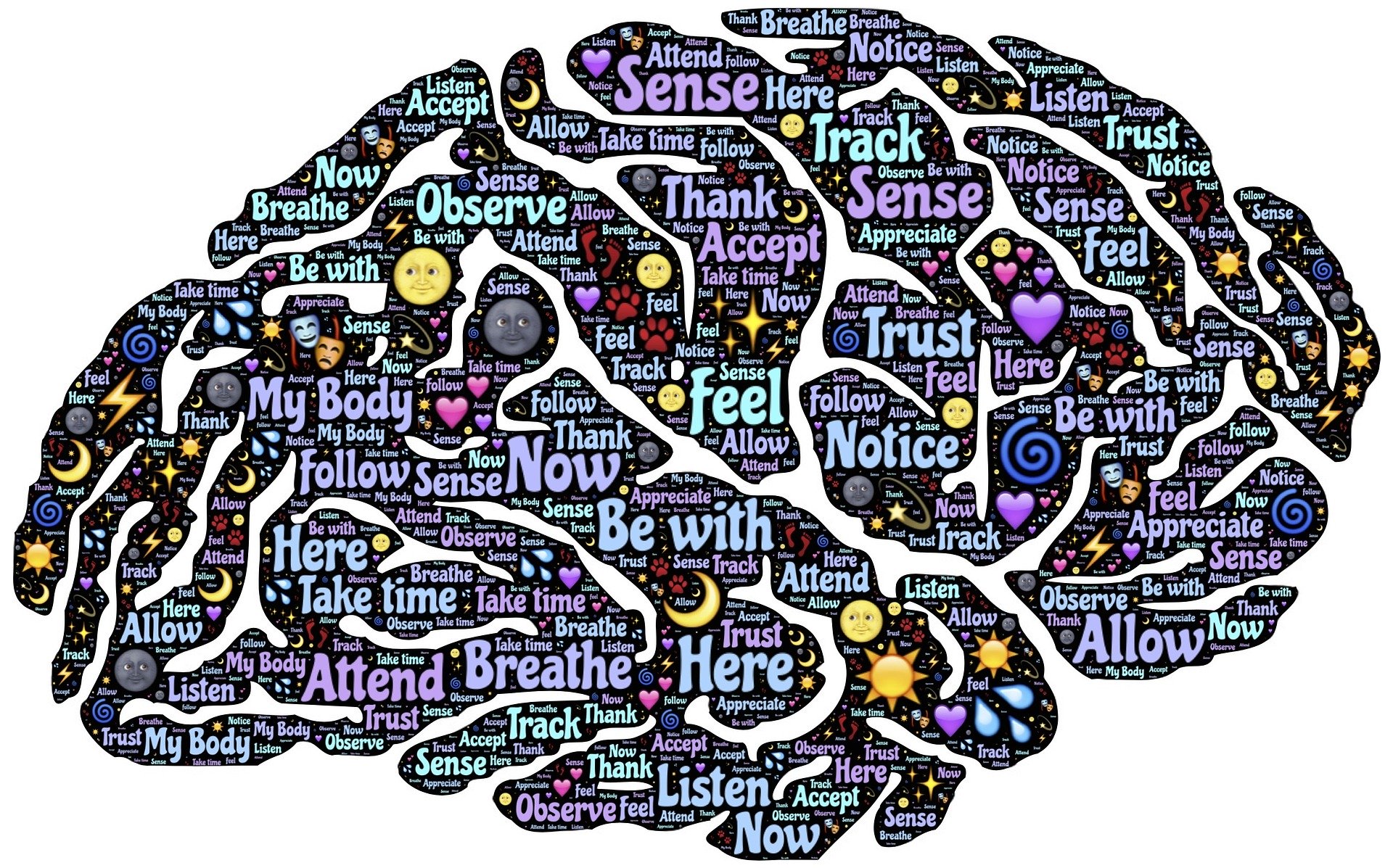
Have you seen these terms before? Mindfulness? Meditation? Do you know what they mean?
I have seen these terms a few times in my research for finding natural remedies for pain. In fact, in the last issue of Reader’s Digest, there is an article titled, New Help for Aching Backs, where they mention mindfulness meditation.
But I really don’t know what that is and how to practice it. So I did some research to answer these questions.
- What is Mindfulness?
- What is Meditation?
- What is Mindfulness Meditation?
- How Do I Do It?
- Can It Help Me Manage My Pain?
- Is It Used For Other Situations?
What Is Mindfulness?
My understanding is that this concept means we are completely present in the moment we are living. This means we are aware of our current experience. We are not thinking about the past and all it’s regrets and mistakes. Nor are we worrying or projecting about the future and it’s concerns.
How many of you, like me, do not live in the moment? Just sitting down to research this article, I find my mind worrying about other tasks I have on my list for the day. That’s not being present. I also found myself thinking about past mistakes today while getting dressed. That’s not being present either.
So to be present and mindful, we are to discipline our mind for the experience we are in and focus on it alone. One speaker defined it as paying attention in a systematic way. This is a moment where we are able to create (as I am doing right now), or have compassion for another, or enjoy a meal. (You get the idea!)
The Chinese character for mindfulness is a combination of “presence” and “heart”. Hmm, so presence of heart. What does that mean to you?
As I studied this, I was reminded of two passages of scripture in the Bible that are applicable here.
Philippines 6:8 says, “ Whatever is true, honorable, right, pure, lovely, of good repute, excellent, or worthy of praise, let your mind dwell on these things”.
Philippines 3: 13b says, “… forgetting what lies behind and reaching forward to what lies ahead”

What Is Meditation?
Not surprising to me, and according to Wikipedia, meditation is hard to define. The simplest and most applicable definition I found was taking a few minutes a day (to start) to sit quietly, focusing on breathing and no other thoughts.
Ideally, you practice concentrating on your breathing, and therefore live in that moment. By practicing this concentration, you are training the mind to be aware of what is actually going on around you and within you at that very moment.
It is a practice of training the mind to focus on that one thought. It is usually breathing, because concentrating on breathing does help us to relax.
So What Is Mindfulness Meditation
I have found these terms used interchangeably, that is, when I seek to define mindfulness, I find an explanation of meditation. But for clarity sake, I will attempt to write what I understand mindfulness meditation to be.
- Experiencing the present by focusing on where you are, what you are doing, how you are feeling.
- Training your mind to focus.
- Sitting in a quiet, comfortable spot to focus on one thing.
Several articles stated that your mind will wander. It is the natural state of our being because we are thinking creatures. When you realize your mind is wandering, draw it back to your focus.
These articles also, over and over, talk about being gentle to yourself when you realize you wandered. Don’t judge yourself. What this means to me is to not berate myself because my mind wandered. Maybe take a deep breath and start again.
Focused breathing seems to be the most popular way to meditate, as we have to breathe anyway and it helps us to focus on one topic.
How Do I Do Mindfulness Meditation?
See above section. But also;
- Find a quiet place where you can sit comfortably. You don’t have to sit cross legged, as we see in so many images of meditation. But you should be sure your butt is not lower than your legs. Your pelvis/buttock should be level with your hips. Otherwise you are putting pressure on your lower back, which can lead to pain. For people in pain this is obviously not what you want.
- Schedule this time when you can be fairly assured of no interruptions. Worrying about interruptions or what the kids are doing will only distract you from the meditation.
- Make a goal that is realistic for your first time. Five minutes is fine! Over time, according to my research, some people meditate for an hour!
- You can close your eyes or find one spot/object/place to focus on. This helps your mind to attend to the now.
- Focus on your breathing. You don’t have to change it, just notice it. And it alone.
- If your mind wanders (and it does) come back to focusing on breathing.
You did it!
Can It Help Me Manage My Pain?
The science is still out on the efficacy of this practice. Here’s a quote from the National Institute of Health (USA) that says, “…small positive effects for pain, and the most recent review on various pain conditions which found improvements in pain, pain acceptance, quality of life, and functional status. Authors of these reviews echoed concerns that there is limited evidence for efficacy of mindfulness-based interventions for patients with chronic pain because of methodological issues.” If you want to read the whole article, click here to find it.
Even though there isn’t scientific proof, there are some people that have experienced pain relief through this practice. I’m of the opinion that it’s worth a try, because you can do it without any side effects from medication, plus it is free.
Here’s a video that is an example of how to do it. There are several out there. Go and check it out after you watch this one.
I read about a program that teaches this in a book/CD/Kindle format. It is You Are Not Your Pain Using Mindfulness to Relieve Pain, Reduce Stress, and Restore Well-Being—An Eight-Week Program. The authors are both chronic pain sufferers. You can get it from Amazon by clicking here. (At this time I do not have an affiliate account, so I do not receive any remuneration for this recommendation.) Read the reviews though. Apparently the Kindle format doesn’t have the CD. It’s $12.00 for the paperback.
I also reviewed a book about alternative therapies for chronic pain. See this article about the book Overcoming Acute and Chronic Pain.
Is It Used for Other Situations?
In the various articles I read, this practice is recommended for anxiety, depression, stress, headaches, and fibromyalgia. I know personally that having chronic pain can leave you feeling anxious and/or depressed.
So, even if there isn’t much science to back this up, wouldn’t it be helpful to spend some time focusing on some quiet mindfulness to redirect your thoughts and feelings?
What do you think? I welcome your comments. I have much to learn about this subject and want to provide the best information on it. Let me know what you think!
Disclaimer
I would be remiss if I didn’t admit that as a Christian, I am hesitant to recommend a practice that seems to have its roots in Buddhism. Therefore I am attempting to be very careful about my explanations. I believe it is of utmost importance to concentrate on breathing, or in my case, God, and be present that way.
The mind is always active and therefore needs to be filled with thought. The challenge in mindfulness meditation is to be in the present and experience the totality of the moment. When meditating, we are training our mind, through what I believe is self-discipline, to cast aside worry and stress and become calm.
Praying to God has the same effect, as we are focused and involved in this activity. Especially as we fill our mind with scriptural truths.
Another disclaimer I must make is that in no way am I a medical professional. I am merely a chronic pain sufferer who seeks natural ways to manage my pain, and share my research with my fellow sufferers. This and all other articles on this site are the result of my searches.
Finally, if you would like to know how I, a senior citizen, and one in chronic pain, have been able to build a website, check out this link. If you decide to join, I receive a part of the fee. Thanks.
Thanks for reading and here’s to less pain and living healthy.



I have been engaged in Mindfulness Meditation for about a year and a half. I use the app Calm. Tamara Levitt provides a daily meditation that runs about 10 mins. There are also Bedtime Stories you can listen to; soothing music and sounds; and additional meditation series for many subjects like ‘Inner Peace’, Relationships, Beginners, and Emotions.
I have found the meditations help me calm my nerves and quiet my mind somewhat. My problem is that when I start feeling better, I slack off or just stop doing them. Then when I am in trouble again, it’s hard for me to practice my meditations. It’s like my mind and body say “No, you can’t silence us again, not without a fight”. You would thunk I’d learn.
I also enjoy doing Mindful walks. At 1st, most people have to start at a slow deliberate pace. You try and notice your legs moving you forward and your feet touching the ground. Feel any sensations, pain, etc as you move and just note them. Listen for sounds—the birds, kids playing etc. Notice, if you can, any smells. This is a good way to bring all your senses into play in the moment. I enjoy this a lot.
Roula: Thank you so much for this thoughtful comment. Someone who has practiced this tool like yourself gives us all hope that I can help us. Thank you for your suggestions with Mindfulness Walks as well. I hope you can continue to practice Mindfulness and that it helps you. Keep us posted!
Thank you for that information Barbara,
I am a true believe of distracting away from pain so I read this with great interest.
I am so pleased that you have shared this information as there is so much for people to learn.
I like to breathe into the pain as I do believe that we can change how we feel through our mind. I am a believer in Mind Over Matter!
Great article
Thank you
Thank you for your thoughtful comment, Imelda. Since you are a health conscious person, it means a lot that you benefitted from this article.
Best to you,
Barbara